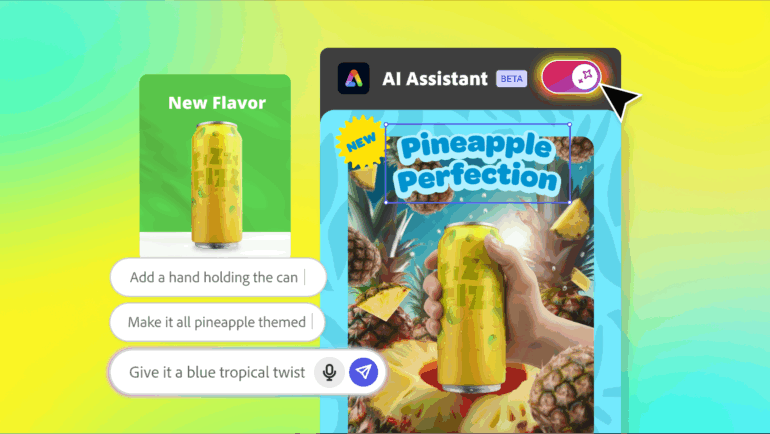
The next big leap in creative technology is not just about generating images or videos. It is about asking an AI to collaborate with you. To understand what you want, help you refine ideas and guide your project through every step from concept to delivery. This is the promise of conversational or agentic AI, a creative teammate that thinks in context, not just in one-off prompts.
I have been at the AdobeMAX conference in Los Angeles to experience this new direction first hand. Adobe is introducing assistants into its design software including Photoshop, Express and Firefly, that follow your instructions in plain language and help shape your project from start to finish.
Why this matters for creators
Content creation is booming, but most people do not have time to master professional tools. Adobe’s research shows the majority of creators are already using generative AI to make content they could not produce before. Many now want AI to guide their workflow, not just automate a single step.
Agentic AI helps by carrying your vision from one task to the next. You can build on your idea without restarting or remembering which tool does what.
Adobe brings agentic AI into key creative apps
Adobe Express

The new AI Assistant in Express turns a template into a working conversation. You can ask for changes like:
- Make this more tropical
- Add my brand colours
- Change this to a TikTok format
The assistant updates the artwork automatically. If you want to fine tune anything, you simply switch to regular controls without leaving the canvas.
Photoshop (for web)

Photoshop now includes a private beta of its own assistant inside the web version of the app. It can take instructions like:
- Remove that object cleanly
- Match the lighting between these images (Harmonise)
- Add a soft depth of field
- Make this look like a studio portrait
Photoshop then recommends steps or performs the changes itself. You can ask follow-up questions and then take over manually whenever you want precise control. This combines the speed of conversational editing with the accuracy professionals expect from Photoshop.
Adobe and ChatGPT
Adobe is also working with OpenAI to link ChatGPT with Express. Soon, users will be able to request a design inside ChatGPT and it will be created using Adobe’s tools, then returned for further editing or sharing. Photoshop support is planned too, which is really exciting because of the power that it puts behind ChatGPT’s text based interface.


[VALENS NOTE: You can add your own view here about whether this makes powerful creative tools available to a much wider audience.]
What makes Adobe’s approach different
Adobe says these assistants are trained with real design and production knowledge. They draw on:
- Established design principles and workflows
- Millions of professional-grade assets
- Adobe and partner AI models suited to different tasks
- Knowledge of what drives visual engagement
The goal is high quality results that are ready to share or publish.
Project Moonlight is Adobe’s next step
Instead of one assistant per app, Moonlight coordinates across them. You can describe a full project and it brings together editing, design and content planning, all in one place.


It will also be able to connect to social accounts to help with content strategy and performance insights, so imagine doing your research first, then moving to ideation, concepts and production.
How this helps business users too
New enterprise features in Express will allow more staff to create on-brand materials through conversation. Locked templates and approvals will help large and small teams produce more content without losing consistency.
A perfect example is adapting content from head-quarters to a local market without needing a skilled designer. This would be especially handy for fast-turnaround work for local events or social platforms.
Where this is heading?
Conversational AI aims to reduce friction and complexity, so you can focus more on ideas and less on technique. The more it understands your intent and creative style, the more helpful it becomes.
This is a major shift towards a future where we may not ever need to learn, for example, Photoshop’s complex interface, but still being able to leverage its powerful tools. But to stop a scenario where art becomes homogenised into AI-created slop, creators can simultaneously access the tools for fine tuning and adding their uniqueness to the finished art.
Valens Quinn attended AdobeMAX in Los Angles as a guest of Adobe Australia.
The post Adobe’s AI assistants help anyone create like a pro appeared first on GadgetGuy.






0 comments:
Post a Comment